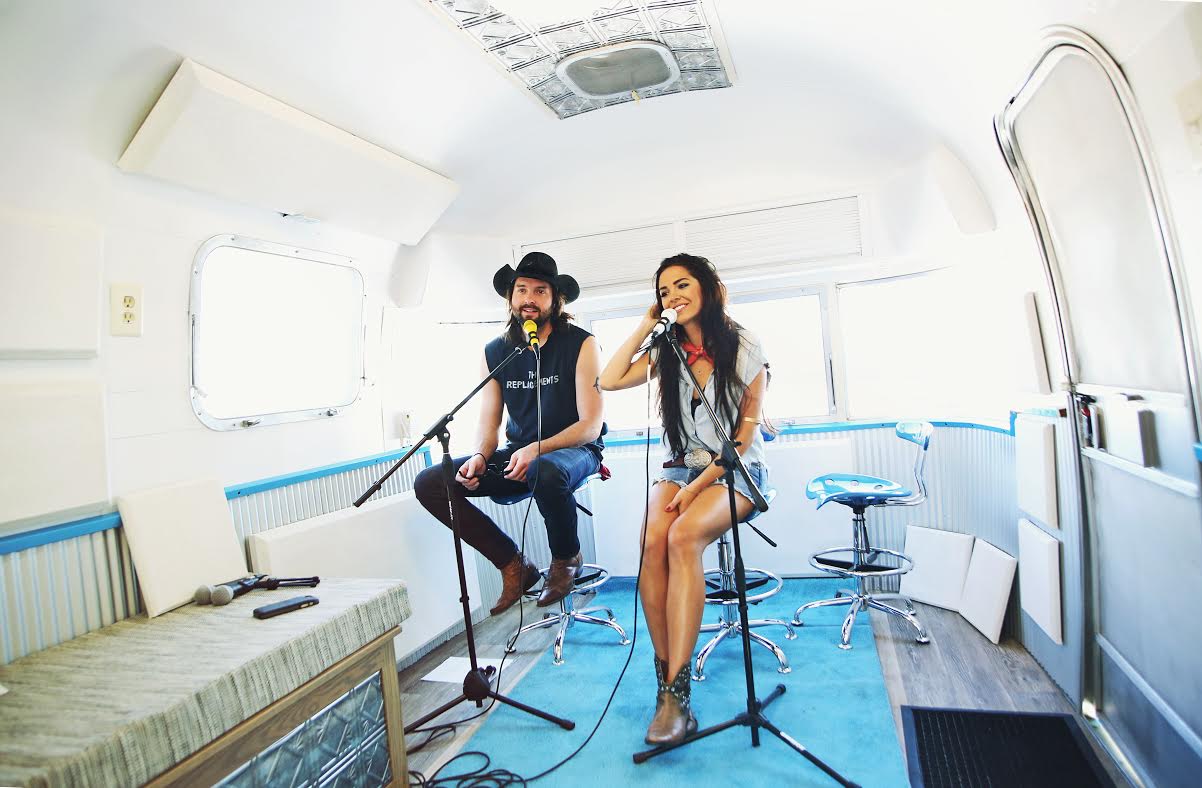Category Archives: Artist
The beach, an Airstream and the PreSonus AR12 Mixer
Don’t get us wrong–working at the PreSonus headquarters in Baton Rouge is awesome.
But if we had the option, doing what we love at the beach is high on our wish list. Somehow that’s just what Cory Davis, with 30A company based in Santa Rosa Beach, FL, has figured out how to do in his work at 30A Radio.
30A is a highway along Florida’s gulf coast offering visitors more than just a beach vacation. Fine dining, prefect sandy beaches, weekend farmers markets, bike trails… you’re not going to want to leave. It’s also where the Truman Show was filmed. You may have seen a bright blue bumper sticker when driving around town–it looks like this:
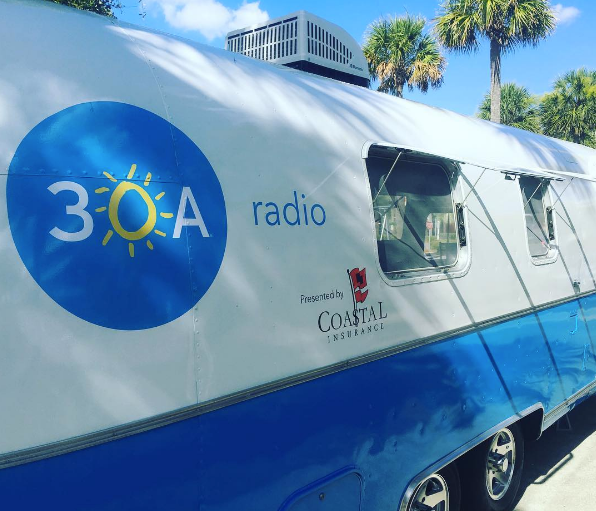
Davis is the Director of Sales for The 30A Company advertising department, and programs and manages 30A Radio. Davis recently got his hands on one of our AR12 Mixers and we wanted to hear how it was treating him and improving his workflow.
- Tell us about yourself…
- Graduated from LSU in broadcasting, been in radio for 25 years. We launched 30A Radio digitally over 2 years ago, broadcasting 100% online via our website, and our free 30A app for iPhone and Android. After leaving FM radio, I really wanted to find a fit digitally to take everything I had learned to the next level. Our main project is expanding the 30A lifestyle into perimeter markets and getting our 30A Radio Airstream to regional music festivals in the Southeast for interviews and sessions with our core artists.
- What PreSonus products have you used and which do you currently use?
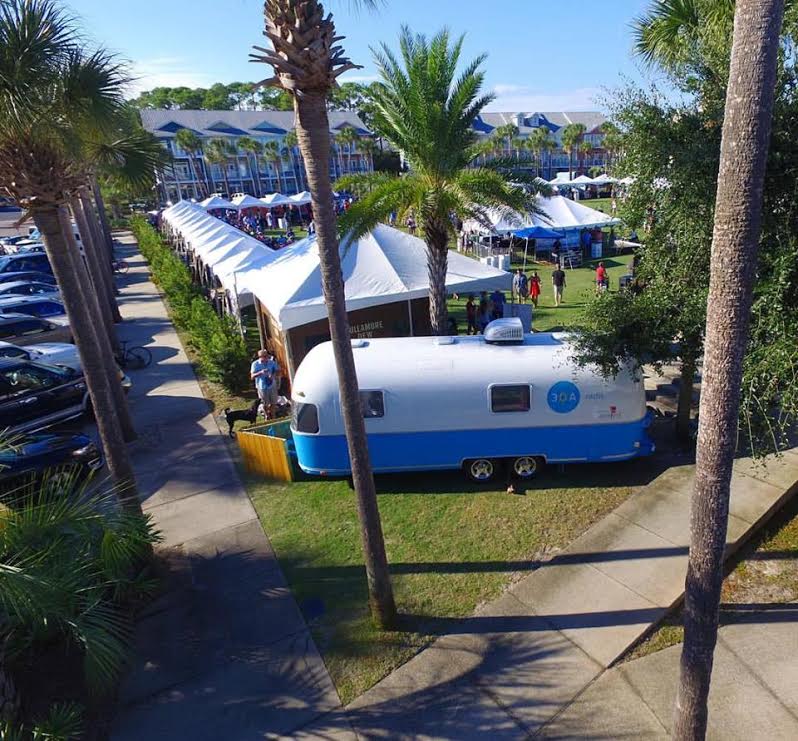
- We use the StudioLive AR12 USB for our Airstream performances, interviews, and podcasts.
- What led you to choose the AR mixer?
- The new AR 12 seemed to fit every capability we needed in such a tight space. We have performances and record in an Airstream. The ability to record directly on the mixer and PreSonus’ reputation was key… and being from Baton Rouge helped. GEAUX TIGERS!
- Having used the AR Mixer, what do you like most about it? What are you using it for?
- We use it for bands that stop in and they play songs which we produce and insert into rotation on 30A Radio. The easy to use functions, and recording on the board were key.
- What mixer feature have proven particularly useful and why?
- Recording easily was key. But the FX and low cut options help. We tend to record in areas that may have a lot of exterior noise, and we can limit some of that pretty easily with dynamic mics.
- How does the AR Mixer compare to other mixers you have used? What’s better, what’s not as good, what does it give you that other mixers don’t?
- It lets me work quickly, on the fly. Tuning up different mics is pretty easy for a guy that is learning to use a board for recording sessions. We have limited time to set up sometimes, and don’t want the band to have to wait too long. So making them sound great quickly is key.
- Any features on your wish list for us to add in future updates?
- Not sure if you can boost the headphone jacks a bit…but that would be one.
- Any user tips or tricks or interesting stories based on your experience with the AR Mixer?
- Recently had John Driskell Hopkins of the Zac Brown Band in the Airstream for a session. He has a home studio and helped fine tune his session. It was bike week at 30A so it was pretty noisy. John suggested using the low cut to get the “Harley” sound out… and it did! Bikes were passing right by us and we didn’t hear them at all on the recordings.
- What’s next for 30A Radio?
- We are really not pushy with 30A Radio, it’s there for our fan base. We try to tell the story of our area, and give the vibe of what we see and do every day here. I guess what’s next is finding out what our limits are in the Airstream with bands and performances. Definitely have a bucket list of artists we’d love to host at some point. Either here or on the road.
- Any final comments about PreSonus?
- It really appears that you guys are user-friendly, and take suggestions and integrate them into upgrades and newer versions of your equipment. And that’s awesome!
- What’s it like working at the beach?
- It’s unreal to think what I have done in the past, got me to this great position. Working in a corporate environment and typical “sales” management for clusters of stations makes you age quickly. I took the best of what that environment was like, and came up with a new template for 30A Radio and our advertising department. Being able to have your feet in the sand, and do radio is quite amazing. We really do that…I swear. Now we can bring the beach to feeder markets for us with our Airstream studios.
- What are your social media handles?
- Facebook: https://www.facebook.com/30Aradio/
- Twitter: @30ARadio
- Instagram: @30ARadio
- Web: 30a.com
Learn more about our StudioLive AR Hybrid Mixers here!
Linzey Rae, Studio One and a Crab Costume Walk into a Kitchen…
Many PreSonus customers ask, “what’s the deal with the Cajun recipes in the back of PreSonus manuals?” May seem odd coming from an audio company, agreed. The truth is, we think it’s cool. We’re a Louisiana company and we’re proud of it. Good food and good music go hand in hand, especially in Louisiana.
We thought it would be fun to combine those things so we hooked up our friend and PreSonus artist Linzey Rae from the band The Anchor with a classic Louisiana recipe for gumbo for one of her Metal Kitchen episodes. Bon Appetit!
She pronounced “andouille sausage” correctly and that makes all of us happy. Can’t wait to hear what’s next from Linzey and The Anchor! Thank you for sharing and for using Studio One!
Subscribe to Linzey’s YouTube page HERE and follow along on all their musical ventures HERE!
Try out Studio One for free HERE!
Michael Josephs Scores Big with Notion
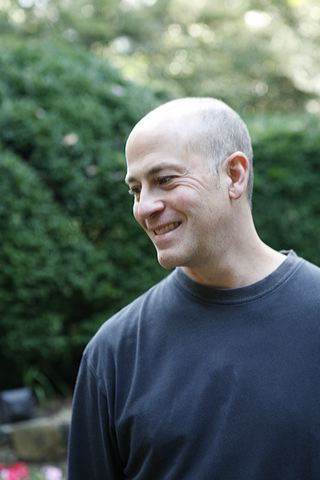 Notion user Michael Josephs is an award-winning American film and television score composer. He has written and conducted musical scores for many notable films and television programs including Wild Kingdom, National Geographic, and many PBS specials. Recent projects include scores for HBO, BBC, PBS, NBC, CBS, ABC, The History Channel, and many others. Michael received a National Primetime Emmy Award nomination for Outstanding Main Title Theme Music for his score for the series Thoroughbred. He has received numerous other awards. He received a National Primetime Emmy Award nomination for Outstanding Main Title Theme Music in 2001. He has received numerous other awards.
Notion user Michael Josephs is an award-winning American film and television score composer. He has written and conducted musical scores for many notable films and television programs including Wild Kingdom, National Geographic, and many PBS specials. Recent projects include scores for HBO, BBC, PBS, NBC, CBS, ABC, The History Channel, and many others. Michael received a National Primetime Emmy Award nomination for Outstanding Main Title Theme Music for his score for the series Thoroughbred. He has received numerous other awards. He received a National Primetime Emmy Award nomination for Outstanding Main Title Theme Music in 2001. He has received numerous other awards.
Hello Michael – please tell us a little bit about the kind of work you do?
I compose and conduct music, mainly for long-form documentaries and TV series, and the occasional independent feature film. My first scoring job was doing a brand-new series called America’s Most Wanted for Fox Television. I did that full-time for a few years right at the start of my composing career, which was a great education because it was on the air around 50 episodes per year, so I was always writing and recording. Most shows only run maybe 8-10 episodes a year, so for Fox I was constantly writing and recording every week, which was a great learning experience, especially because I tried to treat every week like a completely unique score instead of just generic “crime music.”
From there I branched out and started to work for other directors and networks and do other shows like “Wild Kingdom”, “National Geographic”, HBO, a lot of PBS stuff, etc.
Briefly, what’s your workflow/process, from the first time seeing the cue, to conducting and recording it?
I rarely have the luxury of seeing something before it’s handed to me to start writing. I do try to take a day or two at the beginning and just work on thematic material at the piano, some of which, and sometimes none of which, will end up in the film, but it gives me a moment at least to close my eyes and think about what kind of score it will be. The deadlines are always very tight so it’s nice to have a little space to imagine before diving into the mechanics of writing.
From there, I put the film up and start writing from the first frame. I tend to write sequentially, so I go cue by cue straight through the film, rather than jumping back and forth to different scenes. Sometimes themes develop as you work, so I’ll jump back some times and incorporate things or hints of where things may lead.
I started my career before computers, recording live directly to 2” tape for many years, so the computer and digital-video still seem like an incredible luxury to me! Some of the sequenced parts stay in, and I write and copy charts for everything that will be played live.
If it’s a smaller score, I do most everything at my own place, including a lot of overdubs, and then I’ll mix here. I’m set up for 5.1 mixing, and it’s very comfortable working in my own space. If it’s a larger ensemble I’ll do some tracking and mixing at a commercial studio because room is just too tight here. I also conduct the sessions too.
When I track somewhere else I’ve started a new thing lately, which is to just use their physical space and microphones and cue-system, but record right into my own portable rig and rack, which saves time and confusion transferring files back and forth.
What’s the relationship with the director/producer/music supervisor – how can it affect what you write?
Most of the time, at least with documentaries, there are no temp scores or preconceived notions. Directors want me to come up with the concept, direction, vibe, really everything. It’s the opposite of people loving a temp-track…there is no guidance at all, so I really try to give each film something completely different and unique.
As far as directors and producers, it really doesn’t matter how much or how little they know about music, but rather what kind of creative spirit and vision they have. I work with people who know absolutely nothing about music and are wonderful and creative to work with, and others who know a lot about music but have bad instincts with it. It’s really all over the place! I don’t feel it’s their job to know a ton about music. If they could compose music, they probably would!
What was it about Notion that attracted you?
Notion is AMAZING! I love it. I own both Finale and Sibelius, but they have to be the most difficult, not-intuitive programs I’ve ever encountered. Just doing some little tweak requires me to pull out the manual, and even then I still can’t figure it out!
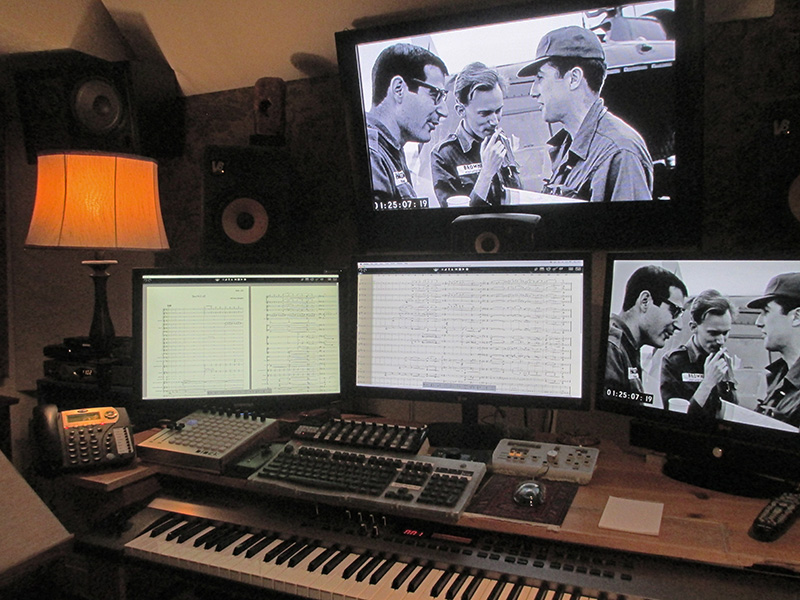
How have you found Notion now you are using it day in, day out?
From the day I tried Notion, I was hooked. It is completely intuitive, and I have never looked at the manual. When you want to do something, it is always very obvious how to do it quickly. It can go pretty deep if you need it to, but the basics are right there and not hidden fifteen deep in some hidden sub-menu. For day to day trying to get work done, it is unparalleled. With the budgets I have, I need to do my own orchestration and copying, and the last thing I would want to do is take three days off of precious writing time to do charts. Film music usually has a ton of key, meter and tempo changes, so this further complicates that process.
Any user tips or tricks based on your experience with Notion?
Sure. I do a quick clean-up of the music before I export a midi file from my DAW. I then import that file into Notion. I also open my empty “template” file in Notion that is set up the way I like, add the relevant instruments to the staff, then do a mass copy / paste of the imported midi file into the template. This is great because Notion reads all of the key and meter changes beautifully. From there I quickly add articulations, dynamics, clean stuff up, and extract the parts. It all goes very fluidly with Notion.
Can you tell us what might be coming up for you, or out soon?
I did a really good film recently called Dateline Saigon, which both has a score and also arrangements of period music. I dove right in with Notion on that, and it was fabulous. I compose 99% of the time, so doing arrangements was a little different for me, and Notion made it possible to do the charts and also change them up and re-print them really quickly when there were re-edits of the film.
I also did another terrific IMax film right after that, but it won’t be released until next year… so watch this space!
Where can we find more about you and your music?
Studio One, Metal and Shepherd’s Pie
You may be wondering what Studio One, Metal music and Shepherd’s pie have in common.
Well, her name is Linzy Rae. Linzy and her band, The Anchor, are the masterminds behind the viral video YouTube series “Metal Kitchen.” With over 1.3 million views on their first video, and 35K followers on Facebook, they caught our eye–and ear.
Check out her first video “The Ghost Inside makes Shepherd’s Pie” from December 2015.
“The Ghost Inside makes Shepherd’s Pie” from December 2015.
Linzey is the lead vocalist for The Anchor, a Melodic Metalcore band based in Denver, CO. They’re also big fans of PreSonus so we figured we could trade them an interview for some Cajun recipes. They agreed and everyone wins!
- What PreSonus products have you used and which do you currently use?
The band started out with an Audiobox USB 2X2 with a free version of Studio One 2 Artist. We eventually upgraded to the producer version because we loved it so much. Now we have Studio One 3 Producer.
- For what applications are you using Studio One Pro?
We have used Studio One Pro for our first two EPs in my band, The Anchor. We have used Studio one for our entire YouTube channel as well. It has worked great in our home studio.
- What led you to choose Studio One? Was it the company’s reputation, audio quality, ease of use, specific features, price, other factors?
We originally used it because we needed a USB interface. We were told the Presonus Audiobox 2X2 would be a great start! It came with Studio one Artist and we loved it because of its user friendliness. Also the all the tutorials have been extremely helpful.
- Having used Studio One, what do you like most about it?
We love it’s user friendliness, compatibility with vst’s and plugins. It also comes with great mixing tools as well as the Project Page is such help with some post mixing/mastering things.
- What Studio One features have proven particularly useful and why?
The project page is particularly helpful in putting final touches on songs.
- Any user tips or tricks or interesting stories based on your experience with Studio One?
Go watch the tutorials and Studio One Experts! It is so helpful!
- Any final comments about PreSonus and Studio One?
Studio One 3 is a great expansion to the already awesome Studio One 2 we had previously. We will never switch, and can’t wait to see what the future holds for PreSonus.
I started uploading some covers to YouTube about a year ago. Now we consistently upload covers on a weekly or biweekly basis. We have videos such as Metal Kitchen, Scream It Like A Girl, and Pop Goes Metal.
- Where did you get the idea for Metal Kitchen?
We were in the studio and someone was going to order Chinese food for dinner. While I was in the recording booth, they asked me what I wanted to eat and I screamed “crab cheese wantons,” which created a running joke. Afterwards, our friend made a joke saying that I could write a recipe into one of our songs and people wouldn’t know the difference (Since the common opinion of metal music is that you can’t understand what the vocalist is saying). Then the idea sort of grew from there.
- It went viral–what’s that like?
The video completely caught us off guard it was amazing and also scary at the same time. We have never had so much attention on us all at once!
- What’s next for Metal Kitchen?
We just released a Metal Kitchen about making Black Bean Burgers featuring Miss May I’s song, IHE. For the next metal kitchen we are thinking about making Tacos to an All That Remains songs. Metal Kitchens format probably won’t change that much but we have a lot of other cool ideas that we can’t wait to try out!
- How can we find you online?
- Youtube: youtube.com/c/linzeyrae
- Facebook for The Anchor: https://www.facebook.com/theanchorband
- Follow The Anchor on Instagram: @the_anchor_band
- Follow Linzey on Instagram: @xlinzeyraex
- Follow The Anchor on Twitter here: @theanchorband
- Follow Linzey on Twitter here: @xlinzeyraex
Try out Studio One for free like these guys did HERE! Who knows, you may be the next YouTube sensation! Stranger things have happened…
Tips and Tricks in Studio One from DJ Headhunterz—part 2.
Obviously, Willem Rebergen, or better known as DJ Headhunterz, is an incredibly talented EDM artist. A part of his genius is a result of his detailed understanding of the functionality of Studio One 3.2.2 and the ease he’s reached working with the DAW. After our initial conversation with Rebergen a couple months ago, we realized that he is a wealth of knowledge that we would love to hear more from—and we knew you would, too!
Here’s part 2 of tips and tricks for Studio One users from DJ Headhunterz!
“I’m not over exaggerating when I say that Studio One brought back the fun of making music for me,” Rebergen states. “I finally experienced what it feels like to ride the creative wave without constantly falling off it. Studio One motivates me to keep perfecting my workflow and I keep discovering new ways to do so every week.”
Rebergen starts off with tips that will ensure an easy, creative flow with Studio One. “If I were to give a tip it would be to make full use of the browser features and the MusicLoop feature. When I finish a song I completely undress it and save all sounds I made in the form of channel presets,MusicLoops and audio files. With every song I make my library expands and whenever I’m in the creative process I can recall any sound I am looking for without having to get into sound designing or endlessly searching through sample libraries. I make sure that every sound I save in MY library is on point. So they rarely need a lot of tweaking to fit into a song and I can just get on with concentrating on the creative part.”
“On the other hand I spend whole days making new sounds, collecting new drum samples, tweaking them etc. So that when I start a song, I’m loaded with content where I can just pick from very quickly.” Rebergen goes on to say, “Another thing I do is I keep an app open on the side called sticky notes where I type down all my newly made key commands (yes I constantly make new ones). I then force myself to use them all the time so they become a natural part of my workflow. Key commands make everything so much quicker and Studio One allows for using them for almost anything.”
Rebergen goes on to share general production tips that have worked for him over the last decade.
- Another thing that I have learned over time, and often read but always somewhat ignored, is that it is absolutely crucial to work with the right sounds. So often, I have found myself trying to fit things in a mix that simply did not fit. It’s very useful to learn to be honest to yourself when making music. Even if you’ve spent hours on making something. Those couple of hours don’t mean anything when you listen to your song by the time it gets released months later. Try to be alert and not be afraid to throw stuff away. It can open up for new ideas when you clean up.
- Nowadays more and more I make sure I have my pallete of sounds ready when I start a song. So that I don’t stumble upon these issues so much. I make sure the sounds are right so that it really comes down to the idea of the song at this point.
- Some tips on making saw leads like I often do in my tracks. I love to use chords underneath but I also love using portamento. So to keep that intact, I just make 3 copies of my lead, nowadays mostly Spire or Serum and I play on each one a note of the chord. This way I can still play a chord while maintaining the glides that are a big part of how the melody is expressed.
- Set the portamento so that it’s only triggered when two notes overlap so that you have complete control over when and how much it glides. I find that using this function instead of pitch bend automation feels more natural because I assume it has a different curve to it.
- Also in the synth itself I often link an envelope to the pitch of the sound and give it a very short attack and set it to about 2 semitones down. So that each note has just a slight pitching up in the beginning. This also brings more expression into the lead sound and makes it less static.
- Find the sweet spot with detuning. LFOs can also help for nice detuning without making it sound too false.
One last reminder from Headhunterz before we wrap. “Keep a beginner’s mind and acknowledge that the learning process is endless. I still feel like a noob sometimes. But I’m very passionately curious, I always want to keep discovering new ways.”
Keep an eye out for more from Headhunterz with part 3 of this series coming soon.
- Follow HeadHunterz on Instagram!
- Follow HeadHunterz on Twitter!
- Studio One 3 is 25% off in June 2016, including upgrades! Click here for more.
The Rocket Summer on taking the StudioLive RM32AI Mixer on tour!
It’s been a long road since Bryce Avary first started putting out music under the name The Rocket Summer 16 years ago. With roots in pop and alt-rock, Avary showcases his talent by writing, producing and playing instruments on all 6 of his albums. The Rocket Summer is currently on tour for their newest record Zoetic which was released in February. We recently caught up with him to see how the tour was going and how the RM32AI Mixer was working for them.
Avary’s assembled a killer live band to take his songs on the road! They’re using the RM32AI Mixer for their in ear monitoring system and mixing everything on their own. Hear more of Avary’s thoughts in the video below.
The RM32AI is obviously a perfect fit for The Rocket Summer and it may be just what you’re missing. All summer long (and then some) select dealers in the USA are offering discounts of Kozmic proportions on StudioLive mixers – See more HERE!
- Follow The Rocket Summer on Instagram!
- Follow The Rocket Summer on Facebook!
- Follow The Rocket Summer on Twitter!
Pete “Boxsta” Martin with Boxsta Music on Studio One 3.2
Pete “Boxsta” Martin with Boxsta Music is an award winning, multi-talented producer/songwriter and one of the most sought after mix engineer in the world. He has worked with a variety of top selling artists such as Arrow Benjamin, Jessie J, Sugababes, Alexandra Burke, and Missy Elliot. Here he discusses leaving Pro Tools for Studio One 3.2 and the ease of the transition.
“Studio One is an incredible platform because it’s the best of every DAW out there. It’s totally new and fresh; it encompasses everything you need.” – Pete Martin.
For more on Studio One 3.2, click HERE.
Try Studio One Professional Demo for FREE for 30 days!
Paul Drew from DWB Music Ltd Shares on his Experience with Studio One 3.2
Paul Drew is the D of DWB Music Ltd/ DWB MIXING. The DWB Music team have sold in excess of 50 million records and have worked with a plethora of artists from around the globe. Here Paul discusses the ease of transition from Pro Tools to Studio One 3.2 and the speed of the workflow with the DAW.
Paul is also a member of the Studio One Expert team where he shares his tips and tricks with thousands of users. Paul states, “As a long term Pro Tools user I’m finding this DAW really inspiring to work on. With Studio One my workflow has been refined, I’m excited and inspired every morning I travel in to the studio.”
If you’ve been holding off on crossing over to the most quickly-growing DAW on the planet, there’s never been a better time than now! Save $50 to crossgrade until April 30! –See more here!
Learn more about StudioOne 3.2 and try Studio One for FREE here!
Pete Stewart on Leaving Pro Tools behind for Studio One 3.2
Grammy-winning music producer, engineer and songwriter Pete Stewart with Fourth Wall Music Production has over a decade of experience in the industry and a trophy case of awards. Here Pete shares about his frustrations with Pro Tools and why he chose to try Studio One for free for 30 days. After the trial he was hooked and his workflow has never been the same. Now with 3.2, it keeps getting better.
If you’ve been holding off on crossing over to the most quickly-growing DAW on the planet, there’s never been a better time than now! Save $50 to crossgrade until April 30! – See more HERE!
Follow Pete on Twitter and Instagram!
Learn more about StudioOne 3.2 and try Studio One for FREE here!
Goodbye Comes Hard for us, Too
 PreSonus wants to express our sincere condolences to the family and friends of Merle Haggard. He will go down in history as one of the greatest performers and songwriters in country music. Like any great performer, Merle never stopped touring, even to the very end—when he was still packing houses and performing to sold-out crowds.
PreSonus wants to express our sincere condolences to the family and friends of Merle Haggard. He will go down in history as one of the greatest performers and songwriters in country music. Like any great performer, Merle never stopped touring, even to the very end—when he was still packing houses and performing to sold-out crowds.

